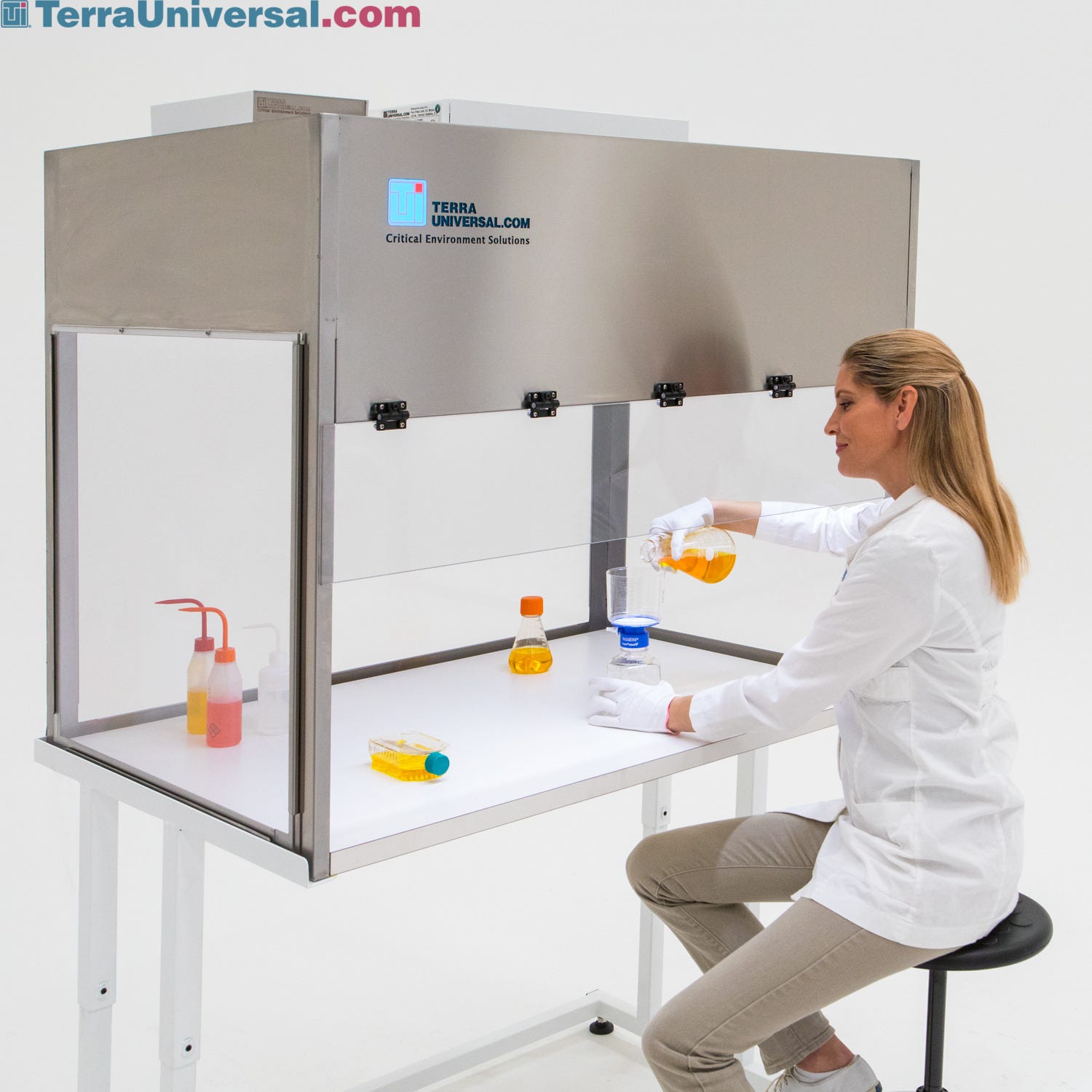

Also, horizontal laminar flow hoods are often larger than vertical ones, making them ideal for applications that require larger work surfaces. This allows for better airflow distribution and increased protection against cross-contamination. It also has an air filter at the top, but instead of filtering down into the cabinet, the air is filtered horizontally across the work surface. The horizontal laminar flow hood is often preferred when more stringent contamination control is needed. A vertical flow hood is often used in applications where speed is important since it is easily accessible from the front or top of the cabinet. Air flows through the filter and down into the cabinet in a uniform, laminar air flow pattern, removing dust and particulate contaminants from the workspace. It consists of a cabinet with an air filter located at the top. The vertical laminar flow hood is the most common type used in laboratories and other cleanrooms. What are the two types of laminar flow hoods? Laminar flow hoods are used in many industries, including pharmaceuticals, research laboratories, and electronics manufacturing. It works by using a combination of air pressure and a filtering system to provide a steady, unidirectional flow of air over the work surface, trapping any airborne particles and keeping the area clean and sterile. Two main types of flow hoods differ according to the functions they can perform: horizontal airflow hood and vertical airflow hood.A laminar flow hood is a specialized laboratory equipment designed to create a contaminant-free work area. The type of cell culture cabinet needed depends very much on the requirements of the laboratory, the kind of airflow needed, working laminar flow principle, and the type of operation. The direction in which the air moves around the workspace and a clean bench is based on the specific cabinet that is being used. The laminar flow hood fan pulls the air through the filter pad where the dust is pinned down then, the HEPA filter pulls out all airborne contamination to maintain sterile conditions. Each of the components of a clean bench plays an important role in creating and maintaining sterile conditions.

Some of the basic components of a chamber include UV light, glass shield, an air intake fan, a protection plate, windows, etc. From the working area and the workbench itself the air is moved back to the environment in the following way: partly – through the perforation in the bottom rear area of the cabinet, but most air – through the space between the working surface of the table and the protecting glass.įlow hood involves a unidirectional exhaustion of air to the workplace and personnel whereby filtered air is discharged with a regular and fixed velocity.
#Cleaning laminar flow hood free#
Hence, laminar flow can be tailor-made under the specific requirements of the laboratory.Ī cabinet is a workbench commonly used in research and medical laboratories that creates dust free abacterial air environment.Īir from the room passes through the HEPA (High Efficiency Particulate Absorbing) filters and is fed into the working chamber by a unidirectional vertical descending flow. The equipment creates clean air for an individual environment, which is necessary for smaller items - for example, sensitive electronic devices. The best usage of a clean bench is for working on certainly specialized experiments in the labs that require a clean environment to design products that are nontoxic.
GgBSeD7pp6U!~~/Vertical-Laminar-Flow-Hood-4Ft-Clean-Bench-Workstation-_1.jpg)
A cabinet is used for work with substances which are not hazardous for the personnel health, and it does not provide personal protection. since they carry out processes that require a clean and sterile environment. Generally, laminar flow is designed to prevent the contamination of semiconductor wafers, some sensitive materials, and even biological samples.Ī cabinet has an industry-wide usage and can be applied in quite a lot of industries such as medical, research, pharmacy, educational, аnd also in electronics, optics, micromechanics, plastic industries, etc. Material transfer in clean air environmentĭesktop chambers, also known as clean benches, are similar to biosafety cabinets in the sense that they are equipments used to clean up the ambient air completely through a filtration process.Sampling the pharmaceutical ingredients.Work with microorganisms of III-IV risk groups.



 0 kommentar(er)
0 kommentar(er)
